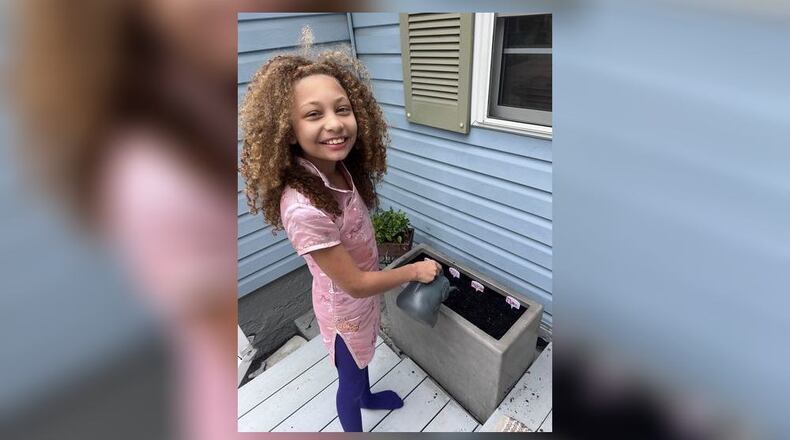Somehow, we always end up growing more than food.
Gardening with kids isn’t just about what grows in the soil. It’s about what grows in us: patience, curiosity and the joy of watching something thrive with a little love and water.
I’m no gardening expert, but I love learning from those who are pros. I asked a few local gardeners how to make gardening with kids fun and meaningful and here’s what they shared:
Let your excitement be contagious
Kids take their cues from us so if you’re excited about gardening, chances are, they will be too. Betty Hoevel, who teaches Garden Time with Kids at Wegzeryn Gardens MetroPark, says even very young children are eager to help.
“Most kids are glad to help in the garden,” she said. “Teaching even the youngest ones to pull weeds and toss them in the compost pile is easy and fun.”
Hoevel recommends involving kids in watering, fertilizing, and even more advanced concepts like companion planting.
“Kids are great learners if you are patient with them.”
Choose plants that do something
Kara Maynard, owner of Deeply Rooted Landscapes, encourages choosing plants that are interactive and sensory-rich for gardening with kids.
“Kids love plants that do something,” she said. “Can you eat it? Does it smell interesting? Are there caterpillars on it?”
This kind of hands-on exploration turns gardening into an ongoing discovery. Kara also suggests grabbing a small shovel, a butterfly net and some jars so kids can watch caterpillars and insects up close.
“Just make sure to let them go after you’ve had a chance to study them.”
Focus on nature, not perfection
One of the best lessons gardening can teach is that nature isn’t always tidy, and that’s okay.
“Kids don’t have to do the gardening,” Maynard said. “It’s just as valuable for them to be outside while the grownups garden. There doesn’t have to be pressure. The outdoors should be an stress-free zone.” J
ust by being present, kids pick up on so much. There are so many lessons to be learned in the garden. Hoevel agrees.
“Gardening is a great way to teach kids about the relationships between insects, pollinators, and plants. The key is to be curious, not afraid.”
She recommends taking time to observe and explore.
“If you come across an ant, look at it and follow where it goes and examine the top of the ant hill. If you see a bee, look at the legs and abdomen to see if it has already collected pollen or is just now starting to look for it. Watch the bees, birds and butterflies enjoy the garden and all its colors, shapes and textures.”
Let kids take ownership
Let kids choose a plant, name their seedlings, decorate pots, or be in charge of watering. The more ownership they have, the more invested they’ll be in garden time.
Even if nothing grows perfectly the experience itself is worth every muddy shoe and worm related meltdown.
You don’t need to be an expert to garden with your kids. You just need a patch of dirt, some curiosity, and a willingness to slow down and look closely. Even if your carrots never grow you will walk away with something far more valuable, and maybe a tomato or two for spaghetti night.
Pamela Chandler is a local mom who writes the Gem City Family column for the Dayton Daily News. Reach out to her at thechandlercrew3@gmail.com.
About the Author

